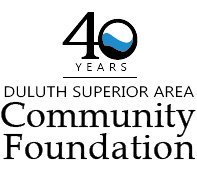Mission
The Biodiversity Fund supports efforts to maintain and strengthen biodiversity in the Duluth-Superior region through preservation and restoration of habitat, help for particular species and ecosystems, planning for changing conditions, research and education. The purpose is to consider now the value to future generations of the species and ecosystem diversity that will remain when/if human population stabilizes.
The Biodiversity Fund values proposals that provide:
- A description of the project’s value
- A clearly defined goal for the project’s work
- An explanation of why the methods to be used are expected to be effective
- A statement of how success will be evaluated
A request for funding of a package of two or more related but different pieces of work should address these points for each piece separately.
Examples
The following are representative but not exclusive examples of projects that could be recipients of Biodiversity Fund grants:
- Inventory, monitoring and analysis to establish priorities for protection and restoration of habitats for species and ecosystems of special concern, especially when state and federal help is lacking
- Planning for impacts of climate change, land use and management practices, urban development or other changing conditions
- Mapping and control of invasive species where they may threaten more desired native species
- Watershed and land protection projects, including fee-title or conservation easement acquisition, innovative regulation or other methods
- Management of sites to protect, conserve and enhance their importance for biodiversity
- Habitat restoration or enhancement of aquatic or terrestrial plant and wildlife communities
- Involvement of students, adults or families in volunteer work on habitat restoration and measurement of consequent changes in species diversity
- Promotion or facilitation of native landscaping and habitat enhancement in yards and neighborhoods and in public and commercial spaces
- Innovative approaches that promote public understanding and engagement in biodiversity issues
Eligibility
To be eligible to apply for funding, an organization must:
- Be classified as a charitable organization under Section 501(c)(3) of the Internal Revenue Code or classified as an organization under Section 170(c)(1) of the Internal Revenue Code or have a fiscal sponsor classified as a charitable organization under Section 501(c)(3) of the Internal Revenue Code or an organization under Section 170(c)(1) of the Internal Revenue Code
- Be located in or provide service to residents within: Bayfield, Douglas and Ashland Counties in northwest Wisconsin; or Aitkin, Carlton, Cook, Itasca, Koochiching, Lake and St. Louis Counties in northeast Minnesota; or the Bad River Band of Lake Superior Chippewa/Mashkiiziibii, the Bois Forte Band of Chippewa/Atisokanigamig, the Fond du Lac Band of Lake Superior Chippewa/Nah-Gah-Chi-Wa-Nong, the Grand Portage Band of Lake Superior Chippewa/Gichi Onigaming, the Leech Lake Band of Ojibwe, the Mille Lacs Band of Ojibwe or the Red Cliff Band of Lake Superior Chippewa/Gaa-Miskwaabikaang
Grant range
Grants generally range from $5,000 to $25,000.
Application timeline
Spring 2024 Grant Cycle
- Application available January 2, 2024 – March 1, 2024 at 5 pm
- Grant begin date: June 1, or later.
- If awarded, funds would be available in June. Notifications will be emailed at the end of May.


